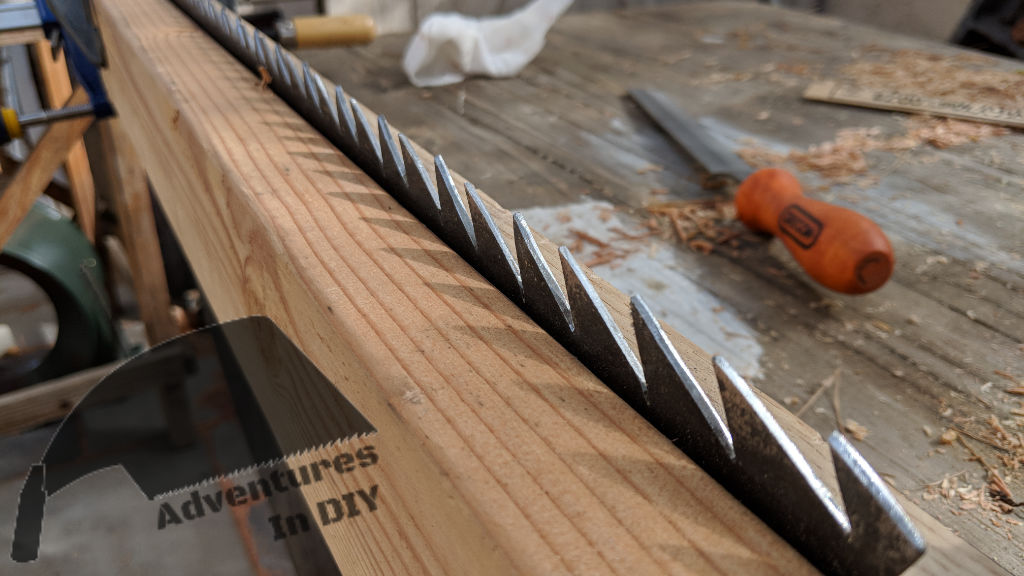This log is from a 30 year old tree that had to be cut down because the original owners of our house planted it near a wall. It was too thick to use the chainsaw mill, but not for the maebiki oga (Whaleback Large Saw). How long did it take? You’ll see in the video.
What Didn’t Work
The Chainsaw?
I guess technically the chainsaw would have worked by freehanding the cut from each side. Where’s a fun video about how long it took people to cut huge timbers to make ancient structures if I did that?
Cutting Straight Up
It’s not so much about using the Japanese whaleback saw straight up but the thickness of what you’re cutting. The log I was cutting went from 26 inches to 20 inches in diameter. In the thicker area the saw couldn’t cut all the way through so you have to cut from both sides. That’s why I had to flip the log in the video to cut from the other side.
On a smaller log or piece of timber that is elevated cutting straight up with the maebiki oga (whaleback large saw) wouldn’t be a problem. Below are a couple of woodblock prints by Hokusai showing timbers being cut. There was no easy way for me to elevate the log I was cutting. I can’t imagine what it took to raise up those logs.

‘In the Totomi Mountains’ by Katsushika Hokusai (1830-1833)
From the series – Thirty-Six Views of Mount Fuji
What Worked
Tons Of Wedges
Wedging the heck out of the log as soon as the whole blade fit in made things easier. A viewer suggested using paraffin wax as a lubricant. I’ll have to give that a try next time.
Keeping The Blade Sharp
The major cut took 3 days to finish. It finally clicked during the last day that I could do a light sharpening with a 200mm feather file on the saw blade and get a break at the same time. Once I started doing that combined with using wedges effectively, I really started to make progress on the cut.
Not really sure what my problem is. I seem to like cutting lumber with large Japanese handsaws. There’s still one more cut that needs to be done on that log. It’ll have to wait for another day though.
If you found this interesting please think about signing up for our email list and get content sent straight to your email when it gets released. Also, we are on the social media sites above and YouTube.



I was wondering how thick is the blade? Thanks.
hey Chris, great vid, I love the stuff your doing. I’m looking to transition to hand tools also as I’ll be doing a long term wood project in an offgrid area so I had a question about tools:
If I need to be ripping boards is the Maebiki oga the only way to go? I saw you started out your cut with an Anahiki could you have done it all the way through that way? Just seems like the Maebiki needs constant filing, something I’m concerned about. Or would you even suggest getting both for flexibility? I currently have a 3ft lynx one man saw that’s pretty good for rough crosscut but need something for ripping and want to keep it minimal as I don’t necessarily want to bring too many tools. Thanks for your time,
JC
Thank you! I think it really depends on the diameter of the log you’re cutting. The Maebiki is great for logs bigger than 12 inches. With that said, I just picked up a little bit smaller Maebiki that might be more manageable for smaller logs. I’ve used the Anahiki for logs less than 12 inches. The Maebiki is a different steel than the new old stock Anahiki I have. The steel is similar to a western saw. During the 14 hours of cutting over 3 days I touched up the saw teeth about twice each day. The Anahiki blade has much harder teeth so I haven’t had to sharpen them yet but I haven’t cut as much lumber with it either. I really appreciate you taking the time to watch my video. Thank you.